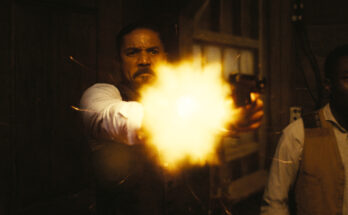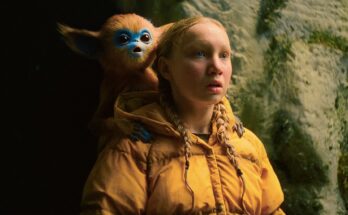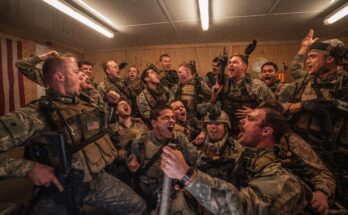Want to hear more from the actors and creators of your favorite shows and films? Subscribe to The Cinema Spot on YouTube for all of our upcoming interviews!
Spoilers Ahead!
Since Stephen King’s debut novel Carrie was published in 1974, King has been publishing at least one book per year. Throughout the years his fiction became classics and have also made their way onto the silver screen. Movies like Carrie, The Shining, Christine, the mini-series for IT and The Stand have made indelible marks on pop culture, and his work continues to influence creators up to this day. In the recent years, we have witnessed a kind of revival for Stephen King’s fiction on the silver screen. His novel 11-22-63 became a Hulu exclusive that premiered in 2016 along with an adaptation of Cell. Now in 2017, we are getting a new adaptation, IT, and of course an adaptation of The Dark Tower. Yes, constant readers, the moment we have waited for approaches. In August we will finally see Stephen King’s magnum opus adapted to the silver screen. The film The Dark Tower is set to premiere on August 4, 2017, starring Idris Elba as Roland Deschain and Matthew McConaughey as The Man In Black. The movie will be a sequel to all eight of the books, but before the movie premieres let’s take a brief look at the Stephen King Universe.
King’s fiction is riddled with the macabre, tales of the supernatural, and things that are not of this world. Throughout his career as a writer he has paid homage to authors of classic works of literature such as H.P. Lovecraft (see The Tommyknockers) and Bram Stoker’s Dracula (see ‘Salem’s Lot). What I find endearing about Stephen King’s fiction is the fact that his work is all connected. Within his work, it is not uncommon to see characters or places from his books to crossover. The cook, Dick Hallorann from The Shining makes an appearance in IT, Pennywise’s presence is established in The Tommyknockers and 11-22-63, and the possessed Plymouth Fury from Christine makes an appearance in IT and The Stand. Stephen King’s son is even in on the action as well. Characters and places from King’s work are mentioned in Joe Hill’s novels such as NOS4A2 and vice versa, but the connections between King’s work extended further than superficial crossovers and cameos. Every piece of fiction that King writes is connected to one thing:
The Dark Tower.
For those of you who are unfamiliar with The Dark Tower series, the first thing you must know is that it is an epic genre mashing series. From fantasy to spaghetti westerns, to romance, science fiction, horror and the classic fairy tale genre, The Dark Tower series has encapsulated it all. The first book in the series, The Gunslinger began as a series of short stories that were published in The Magazine of Fantasy and Science Fiction in October of 1978. The books themselves were published intermittently over the years, the conclusion to the series being published in September 2004. King has stated that this series is his magnum opus, so it is only fitting that he make The Dark Tower the center of his fictional universe.
Now for a brief introduction:
The world in which the Tower resides is called All-World, beyond that is Mid-World, beyond that is End World which is farthest from the Tower. All-World can only be accessed through Mid-World which is home to Roland Deschain, the protagonist of The Dark Tower series. Mid-World is also home to Randall Flagg, better known in the Dark Tower series as The Man in Black. Flagg is one of King’s most nefarious and vilest villains and he appears in multiple novels. One of Flagg’s most notable appearances in King’s fiction since his debut in The Eyes of the Dragon which was published in 1984, is in The Stand. Flagg’s purpose within the Dark Tower series, and King’s universe in general, is to stop Roland from reaching the Tower.
I digress, let us return to the Tower itself. In the Stephen King Universe, The Dark Tower is the center of all of the creation. It is purportedly the body of Gan (God) and is held up by six beams, at the ends of each beam are portals protected by guardian animals. The destruction of the Dark Tower would mean the end of all of creation.
The Tower itself is six hundred floors, each door within it leads to an infinite number of worlds, some of which Stephen King has written about and some of which the characters in The Dark Tower series have traveled. From the first book of The Dark Tower series we know that it is possible to time travel and to travel to different worlds and to different times. In fact, Roland’s Ka-tet (his group of gunslingers) are from different worlds and from different times. One member, Father Callahan is plucked straight from the world of ‘Salem’s Lot (King’s second novel). Is it all starting to come together now?
Now here is where it gets meta. Let us narrow the focus down to the man himself. Stephen King.
King’s fictional universe is so broad in scope that he himself is a character in his fiction. In the sixth book in The Dark Tower series, Song of Susannah, Stephen King comes face to face with his characters who at first regard him as their creator. I will not further delve into The Dark Tower mythos of creation and so on, I will only elaborate on King himself. Flagg and the Crimson King (The being that wants to destroy The Dark Tower) even attempt to assassinate King before he can finish the series. However important and powerful King is made out to be in his work, he is not the equivalent of God, but he is an instrument, better yet, Stephen King is the Scribe of God or in this case the scribe of the Dark Tower. In this book, King has ceased writing the Dark Tower series, because one: He was afraid of Roland and the things that he would do to get to The Dark Tower, and two: King felt that there was something that did not want him to write the rest of the story. King’s connection to the story of the Dark Tower is not like his connection to the various other worlds that he writes of. His writing of The Dark Tower series is integral to Roland’s journey to the Tower, so should King choose to not complete the series, or die before finishing Roland’s story, Roland himself will never reach his Tower. In short, The Dark Tower is the center of Stephen King’s fictional universe and of all creation. If his universe was a machine, the Tower would be the linchpin.
While there is much more to discuss regarding the Stephen King Universe and The Dark Tower series, I will end it here. After all, this is to be a short introduction. Long days and pleasant nights readers.






22 Comments on “The Dark Tower & The Stephen King Universe: A Short Introduction”